Nutrition > DISCUSSION POST > SCI-228 Week 1 Discussion: The Digestive System | Download To Score An A (All)
SCI-228 Week 1 Discussion: The Digestive System | Download To Score An A
Document Content and Description Below
SCI-228 Week 1 Discussion: The Digestive System Let’s follow the path of a delicious ham and cheese sandwich with lettuce and pickles as it is eaten and digested! Start at the beginning and d... iscuss the anatomical parts as well as the biochemical roles that contribute to this sandwich being turned into chemical energy. Be sure to include mechanical and chemical mechanisms, along with how they are metabolized in the body! What happens if one part does not function? For example, what happens to digestion if the person is missing many teeth but can't afford dentures or perhaps has a digestive disorder? 1. What stress factors may cause issues in the digestive tract for some people? 2. How can a regular exercise program aid in the development of a healthy digestive tract? 3. How might digestion and metabolism be different over the life span? As we eat, the organs of the digestive system form the gastrointestinal track (GI) to create an open tube that runs from our mouth to the anus (Grodner, Roth, Walkingshaw, 2007). The chemical breakdown of food particles from the digestive organs are being used by various cells within the body to function properly. Digestion begins with the mouth. The stimulation of food in the mouth is done by chemical and mechanical digestion. Chemical digestion occurs through saliva and amylase that begins the digestive process of starches. Mechanical digestion depends on teeth and tongue that also occur in the mouth. Teeth help to tear and pulverize food, and tongue assists food into chewing positions and helps pulverized food to send into the esophagus (Grodner, Roth, Walkingshaw, 2007). When the food is taken into the mouth, the teeth or the mouth help food to breakdown with the help of enzymes called salivary amylase. For example, when the ham and cheese sandwich is taken, the amylase and mucous membrane chemically altered the sandwich so that it would be easier to pass the food through the esophagus. When the food reaches the esophagus, the bolus that was formed by the mucous membrane is propelled by a movement called peristalsis (Ramsay & Carr, 2011). From esophagus, the bolus is sent through the cardiac sphincter to the stomach. The primary function of the stomach is to prepare food for digestion and absorption by the intestine (Ramsay & Carr, 2011). The stomach glands secrete mucous to protect the stomach linings from ulcers. In the stomach, the food is reduced to chyme or solid substance. After that these substances enters the small intestine and large intestine. The small intestine produces digestive enzymes to further breakdown the food and nutrients and chymes are prepared for absorptions. The small intestine is the major organ for digestion and the final stage of digestive process. In this organ, the most of the chyme is absorbed, and the remaining minerals, water, and fibers are sent into the large intestine. In the large intestine, final absorption of any available nutrients takes place, and it removes water and electrolytes. Lastly, the waste products are stored in the rectum and eliminated through the anus. If the person is missing many teeth but can't afford dentures or perhaps has a digestive disorder, he/she is unable to break down certain carbohydrates, fruits and vegetables, and other essential nutrients because chewing of food is required to produce enough produce saliva in the mouth. Without teeth, people have changes in food preferences and subsequent nutrient deficiencies which results in illnesses and GI disturbances. Stress can affect digestion and cause digestive diseases. Stressful situation activates flight or fight response in our CNS (central nervous system) and effect blood flow, contractions of digestive muscles, and decreases secretions that are needed for digestion of food. Stress also causes inflammation of GI system and makes individuals vulnerable to infection (Grodner, Roth, Walkingshaw, 2007). Exercise is important for our overall health. Regular exercise improves blood flow throughout the body including digestive system. Exercise also helps prevent many diseases and constipation. As people start to age, the whole system is going to decline. Body’s metabolism and digestion decreases in aging. People start developing constipation, poor digestion, particularly heartburn and indigestion (Murray, 2014). Constipation can be the result of disorders of metabolism, bowel obstructions, cancer, and other diseases (Murray, 2014). References: Murray, M. T. (2014). digestion & aging. Better Nutrition, 76(6), 28-30. Ramsay, P., & Carr, A. (2011). Gastric Acid and digestive physiology. Surgical Clinics Of North America, 91(5), 977-982. doi:10.1016/j.suc.2011.06.010 Grodner, M., Roth, S. L., & Walkingshaw, B. C. (2007). Foundations and clinical applications of nutrition: A nursing approach. St. Louis, Mo: Mosby Elsevier. Discussion Response It is good to go through your discussion post. Food enters the GI system through our mouth. From our mouth, the food enters to esophagus, stomach, small intestine, large intestines, rectum, and the anus. In the mouth, mechanical breakdown of food by chewing and chemical breakdown through saliva occurs. From esophagus, food moved towards stomach by peristalsis. In the stomach, mainly chemical breakdown of food occurs. In the small intestine, digestion of starches and absorption of nutrients take place. In the large intestine, absorption of water and salt, and concentration of feces occurs. In the rectum, undigested material and bacteria called feces takes place. Finally in the anus, waste leaves the body. After reading your post, I came to understand that our daily lifestyles play vital roles on how to shape our healthy and unhealthy bodies. Nutrition is the foundation for health and wellness and helps us to live longer, healthier lives, as well as aiding in the prevention of chronic diseases (Grodner, Roth, Walkingshaw, 2012). In the aging population, calorie requirements decreases, but the requirement for protein, vitamins, and minerals are unchanged (Grodner, Roth, Walkingshaw, 2012). We as a nurse need to encourage all age group to consume all sources of protein, grains, fruits and vegetables, and dairy products so that they will live longer, healthier, and free from chronic illnesses. Fruits and vegetables offer important vitamins and minerals. Different colors (deep yellow & dark green leafy vegetables) fruits and vegetables provide number of health benefits (Neithercott & Webb, 2011). Besides consumption of food, we should encourage individuals to exercise because as you mentioned in the post that exercise can prevent constipation, help for digestion and metabolism, good blood flow, and prevent from illnesses. Grodner, M., Roth, S. L.,& Walkingshaw, B. C. (2012). Nutritional foundations and clinical applications: A nursing approach (5th ed.). St. Louis, MO: Elsevier Mosby. Neithercott, T., & Webb, R. (2011). Tasting the rainbow. Good health comes in many colors. Diabetes Forecast, 64(8), 31-34. For Professor’s response: After watching the video, I was able to know that the key points that are applicable to all age groups for optimal health and wellness are: 1. Requirement for protein, vitamins, and minerals are unchanged throughout the life. As people age, calorie requirement decreases. 2. Fruits and vegetables offer important vitamins and minerals. We have to choose deep colors fruits, deep and dark green leafy vegetables to promote good health. 3. Whole grains are key ingredients of a nutrient-dense diet. They not only provide vitamins and minerals but also provide fibers. 4. Protein helps build and maintain muscle, bones, and skin. Lean meats, fish, eggs, beans, lentils, and nuts are good source of protein. 5. Low-fat milk, yogurt, cheese are sources of calcium and vitamin D. 6. Monounsaturated fats that are found in canola oil, olive oil, and Omega -3 fatty acids that are found in fish and walnuts are good source of fats. [Show More]
Last updated: 1 year ago
Preview 1 out of 5 pages
 (1).png)
Reviews( 0 )
Document information
Connected school, study & course
About the document
Uploaded On
Nov 04, 2022
Number of pages
5
Written in
Additional information
This document has been written for:
Uploaded
Nov 04, 2022
Downloads
0
Views
65




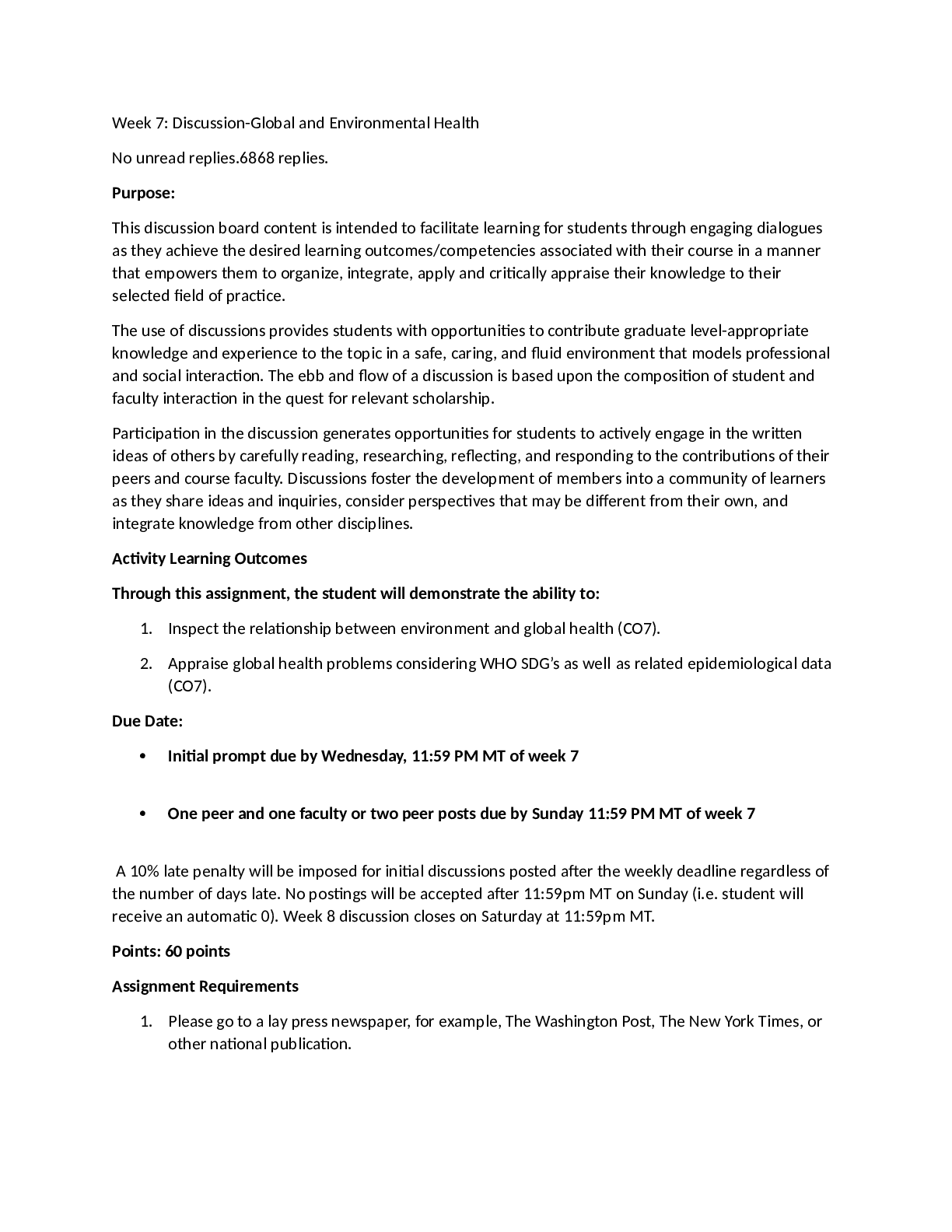


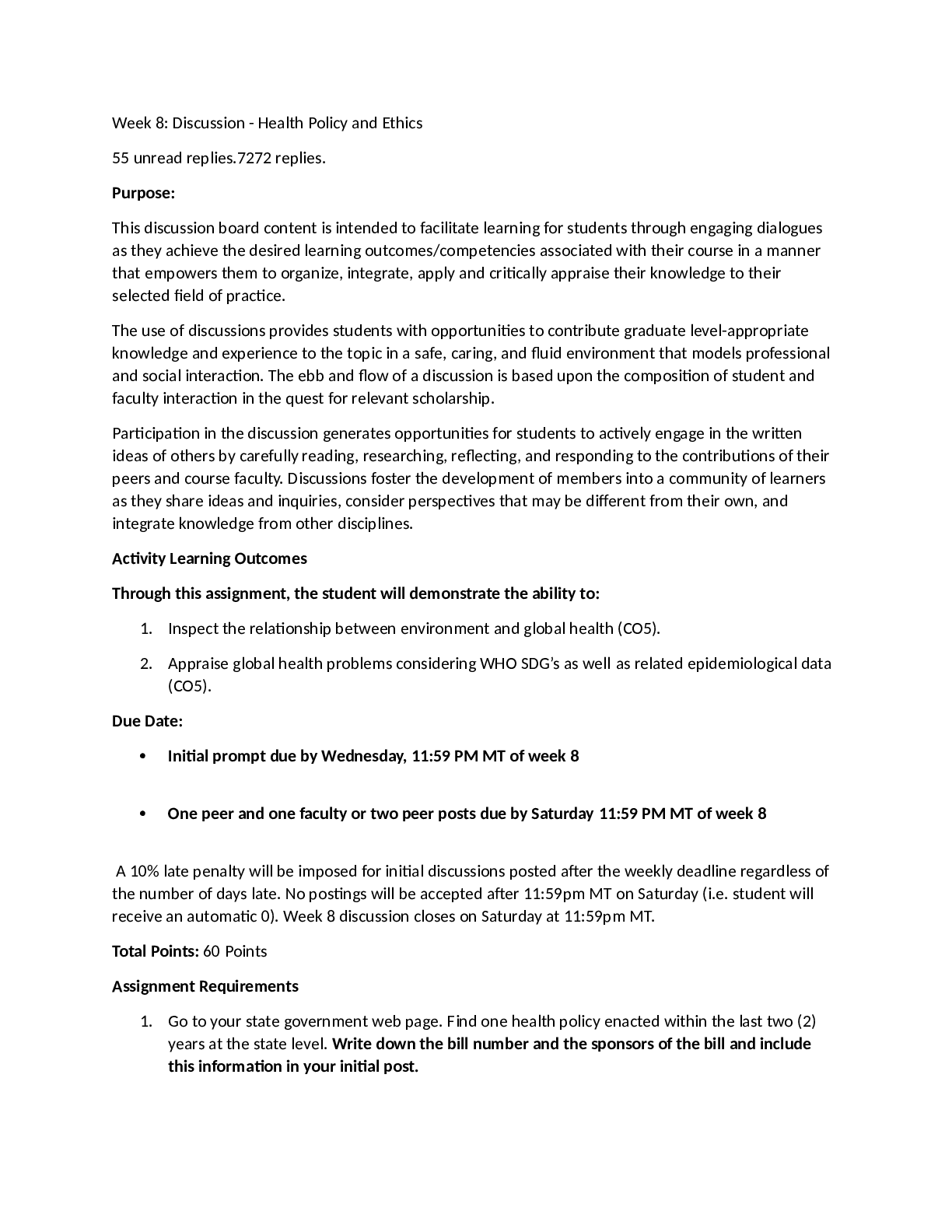

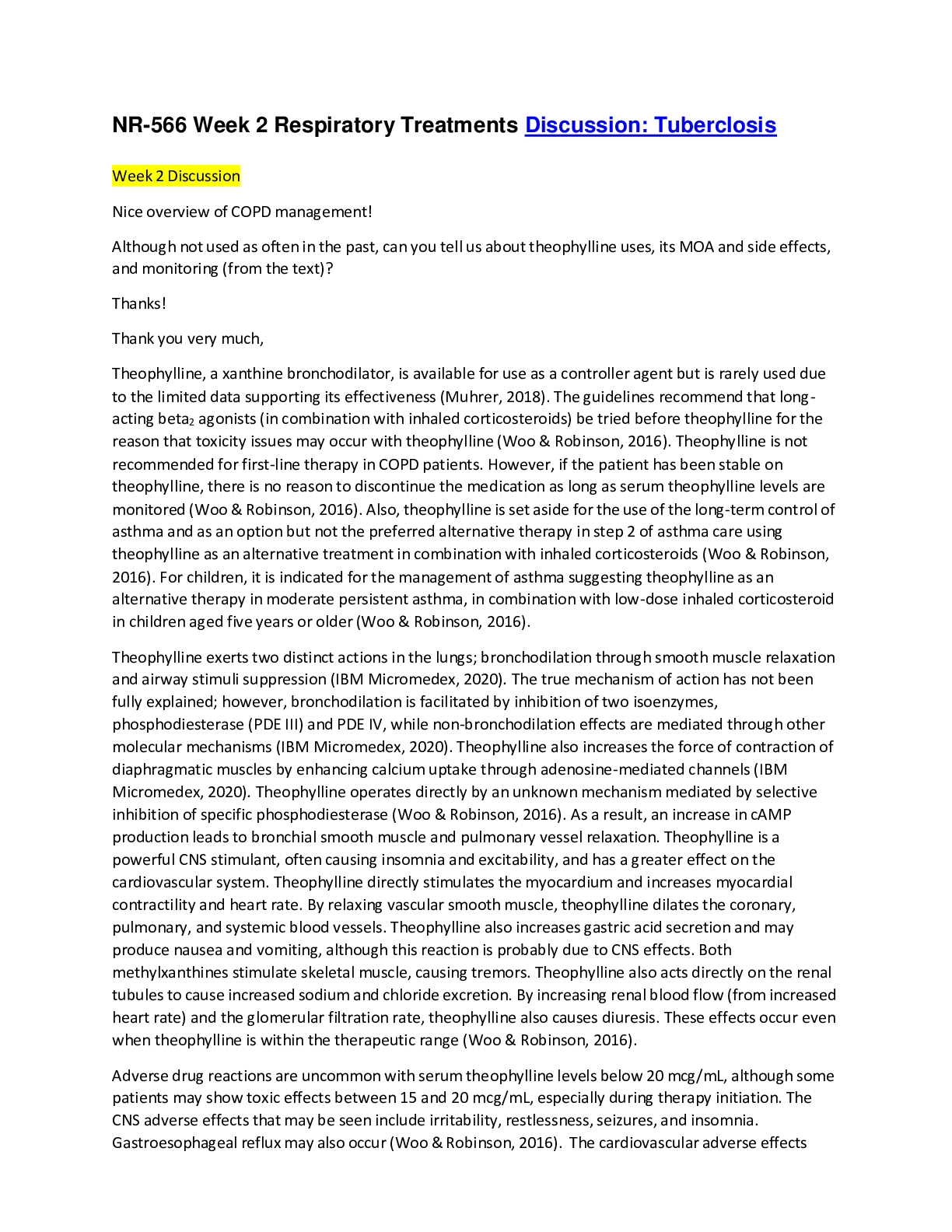
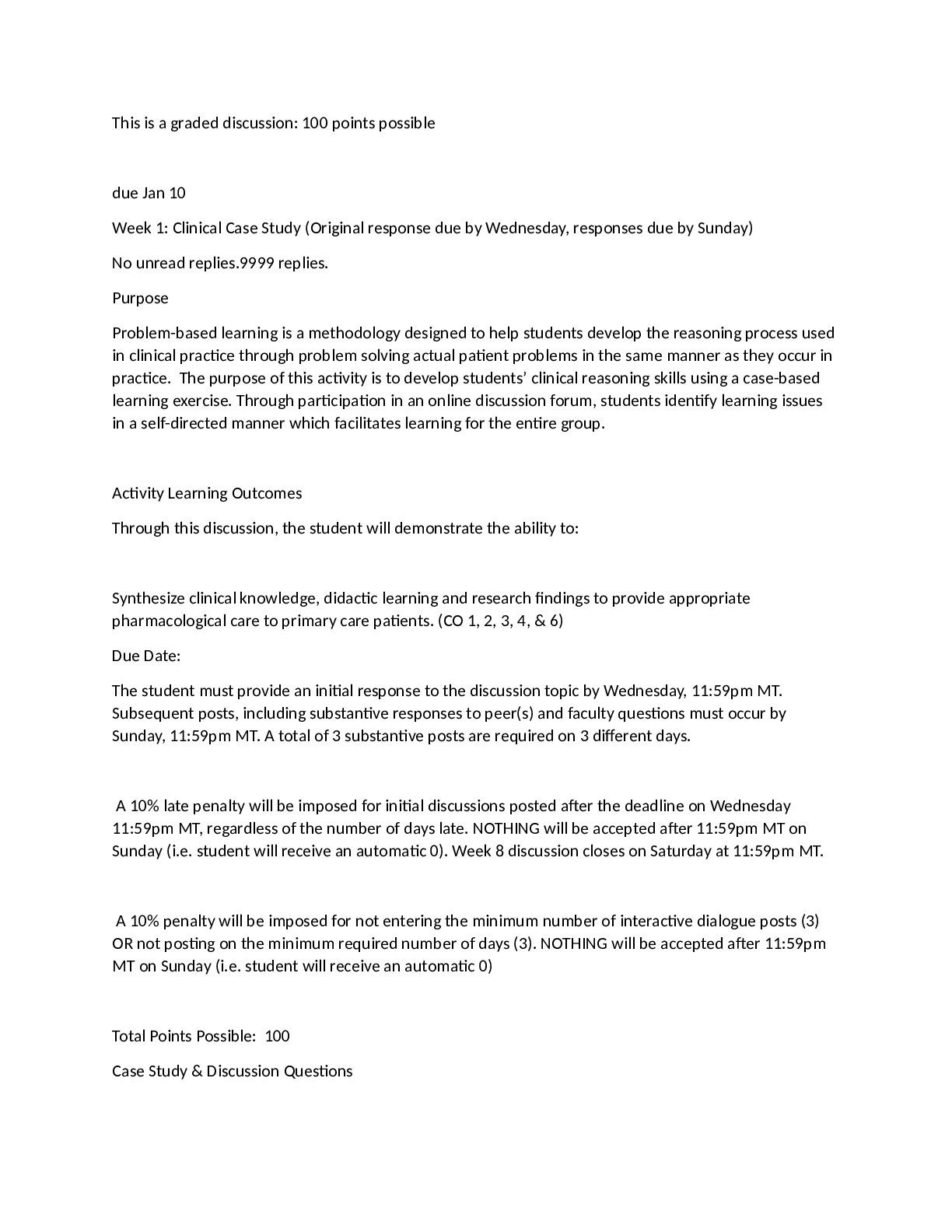
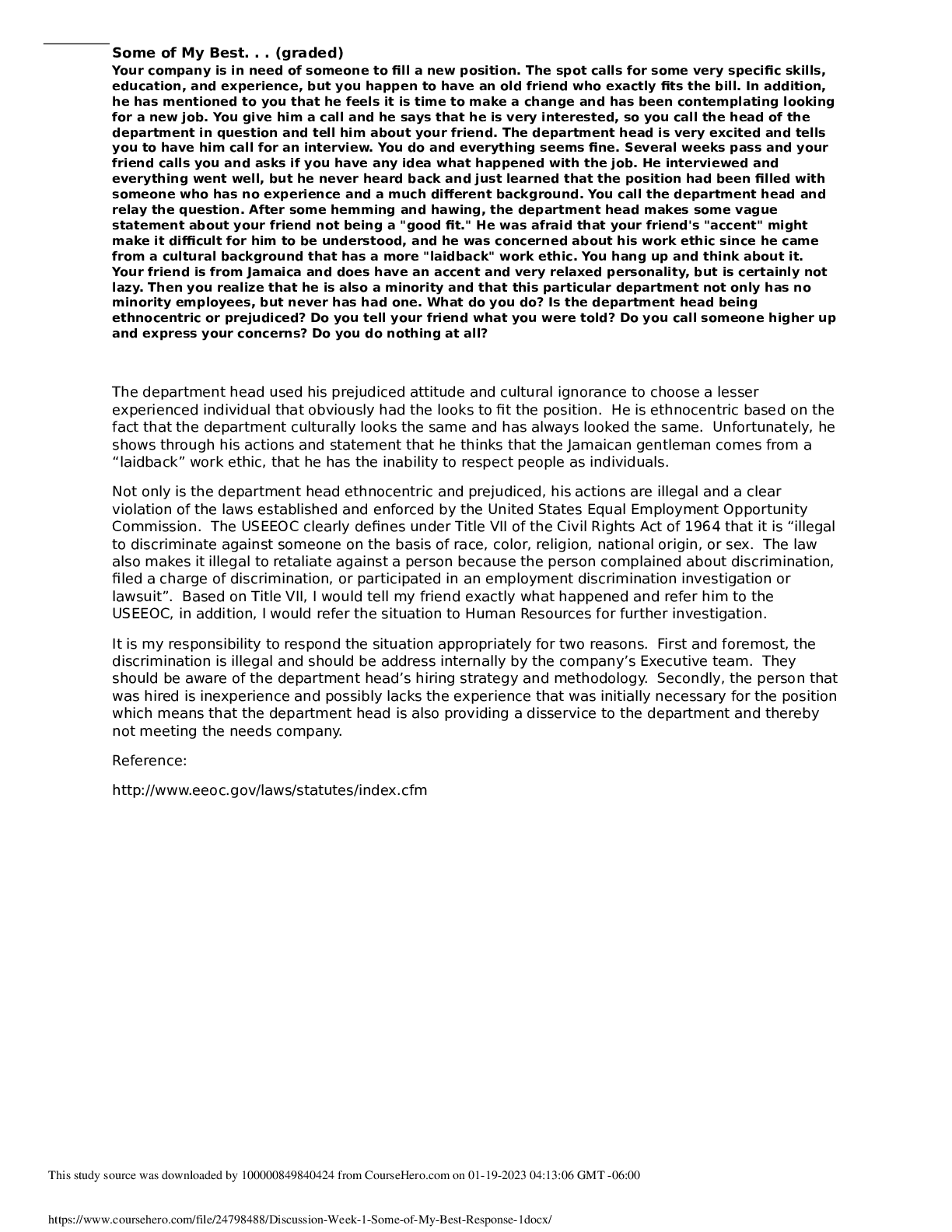


.png)
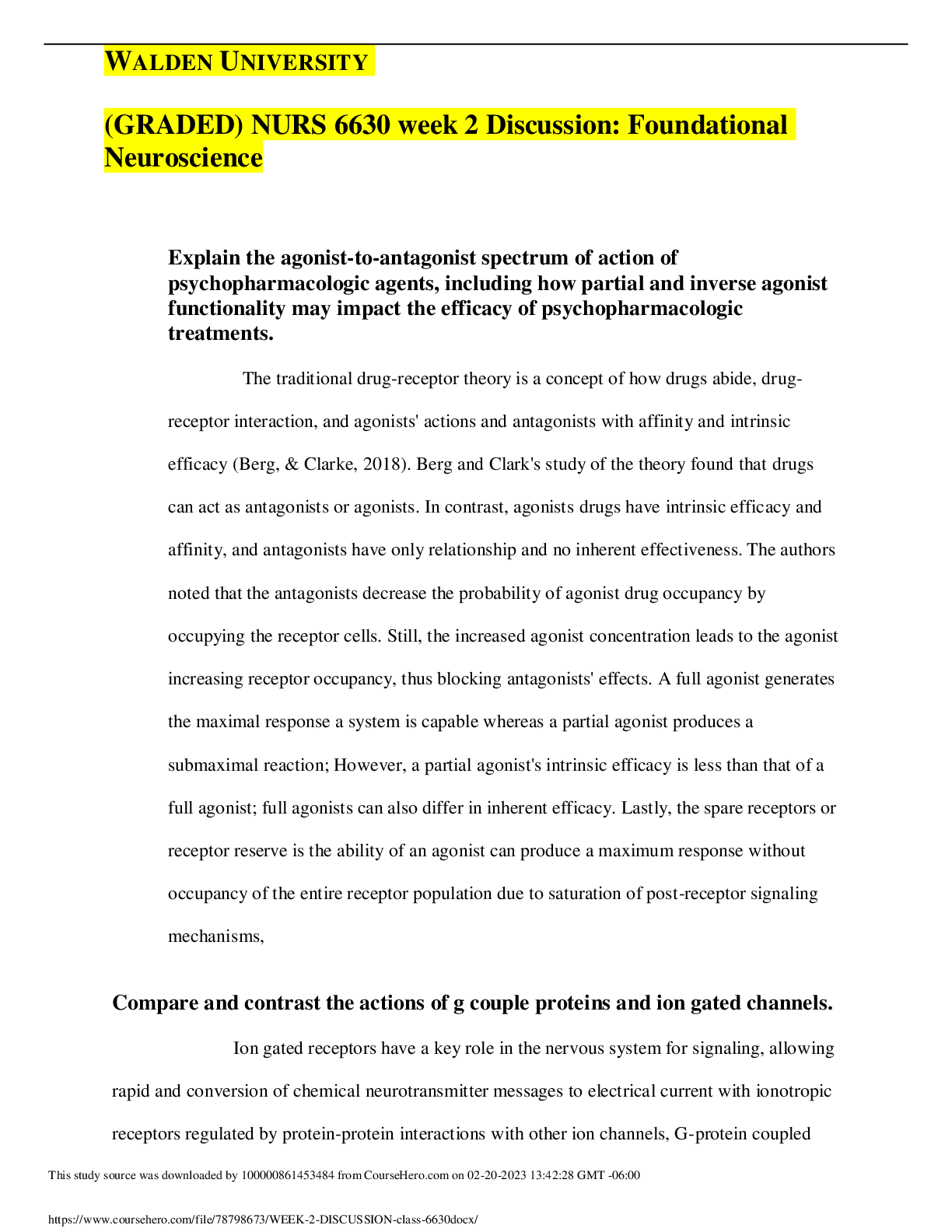
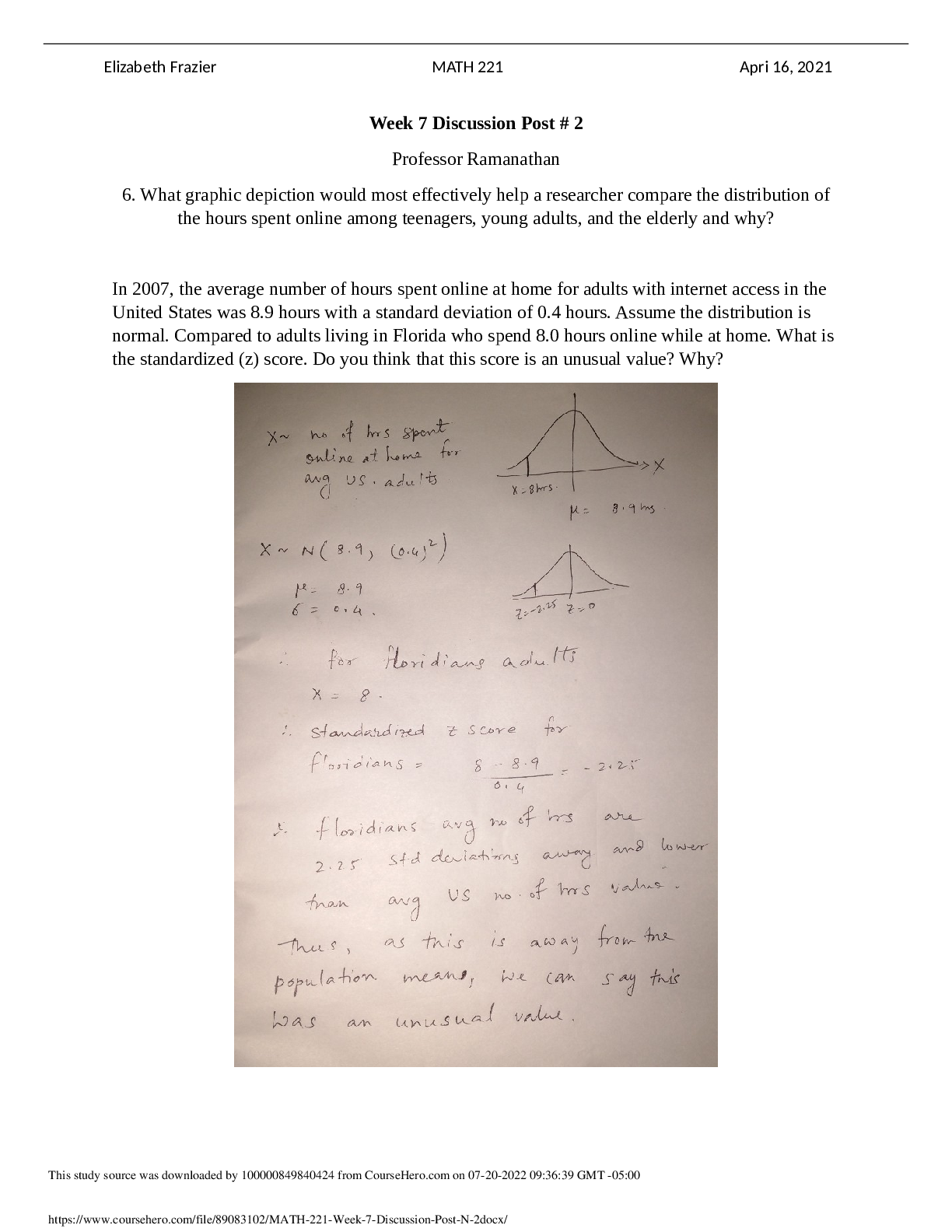

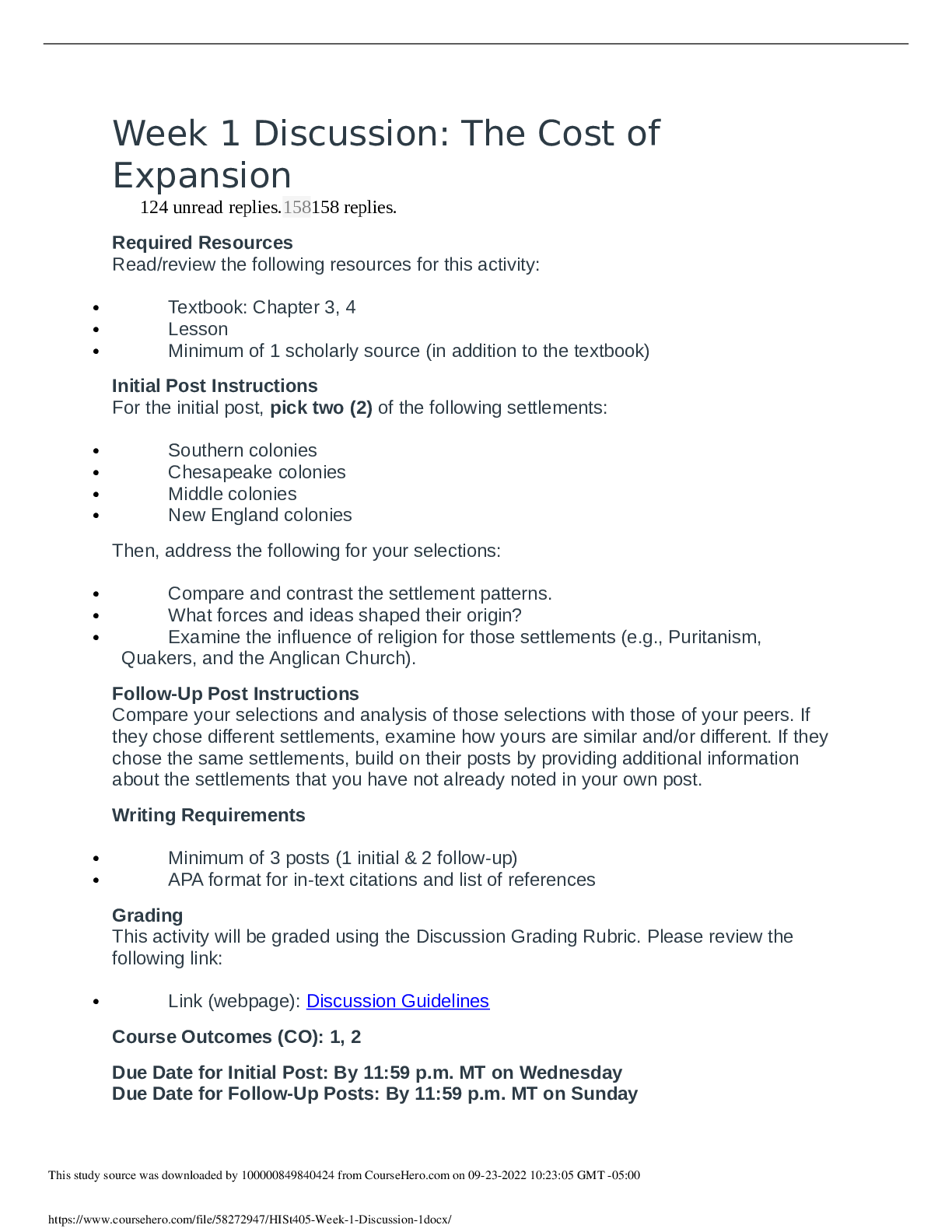
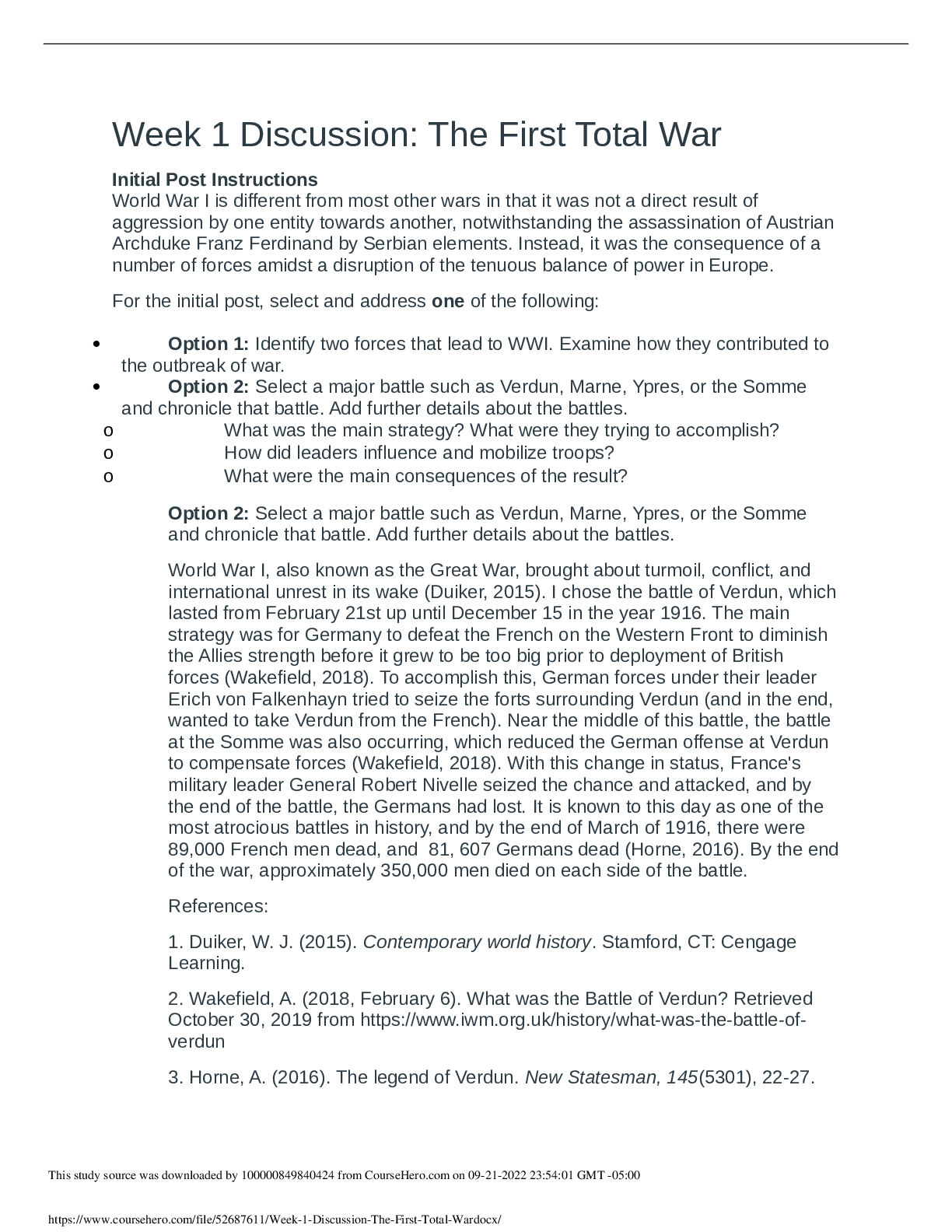


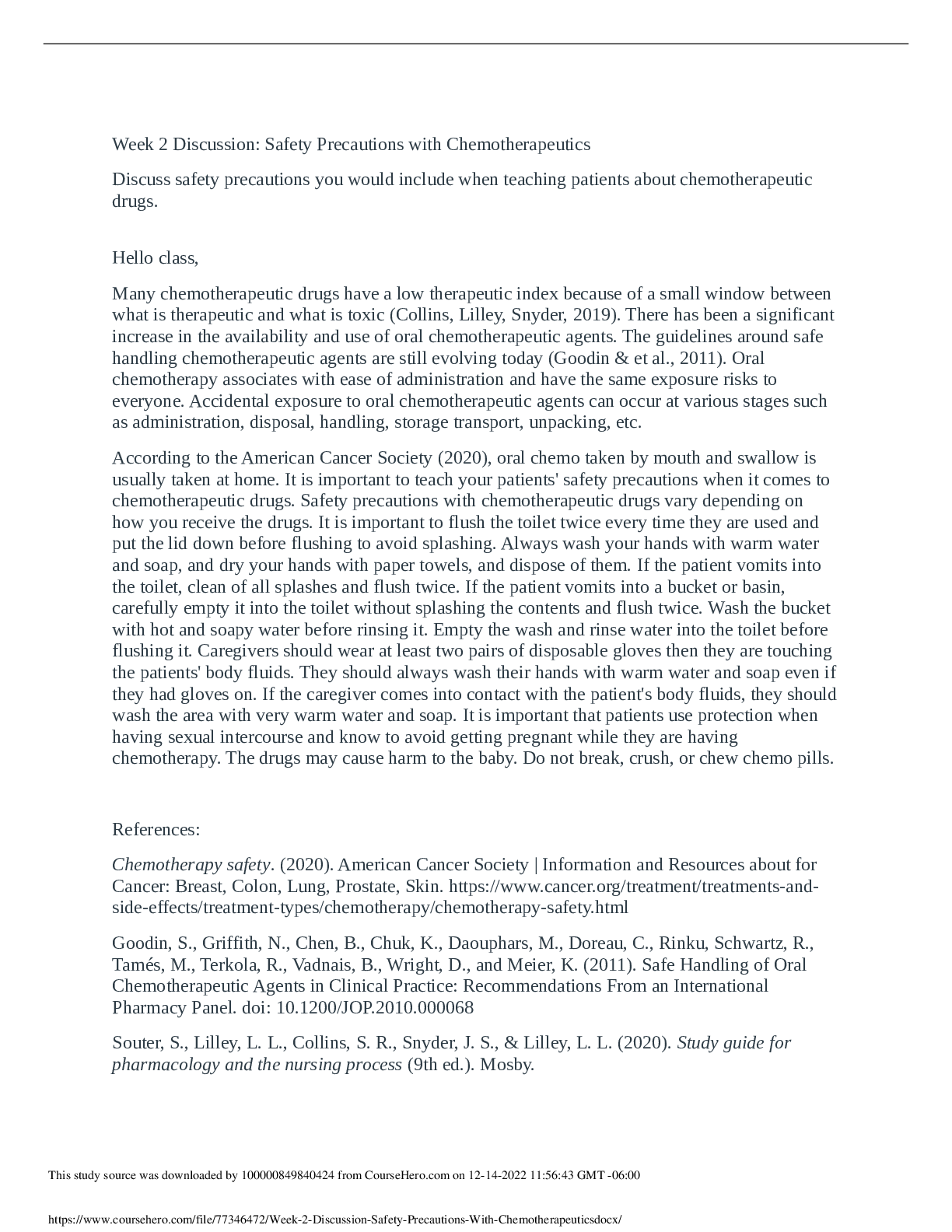



 (1).png)


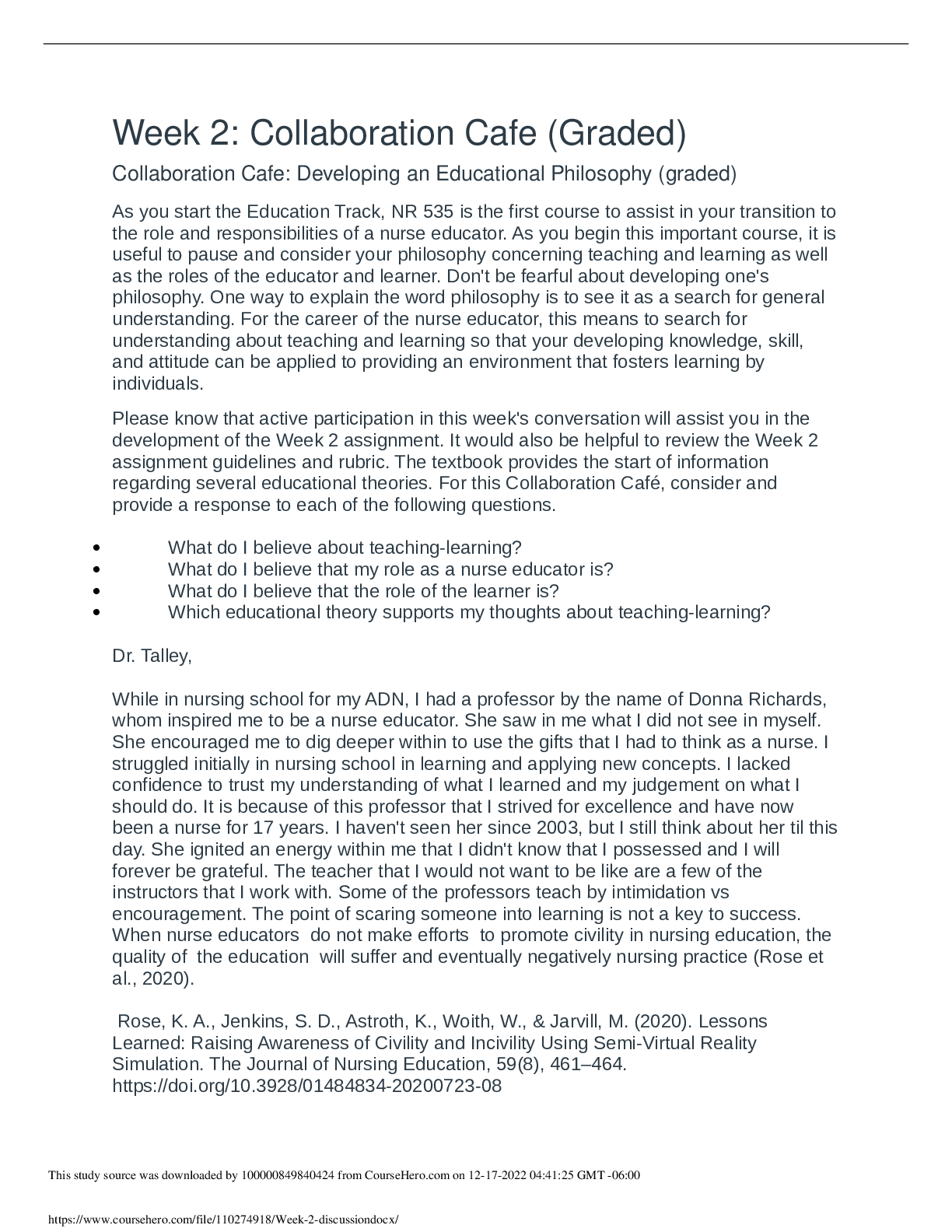
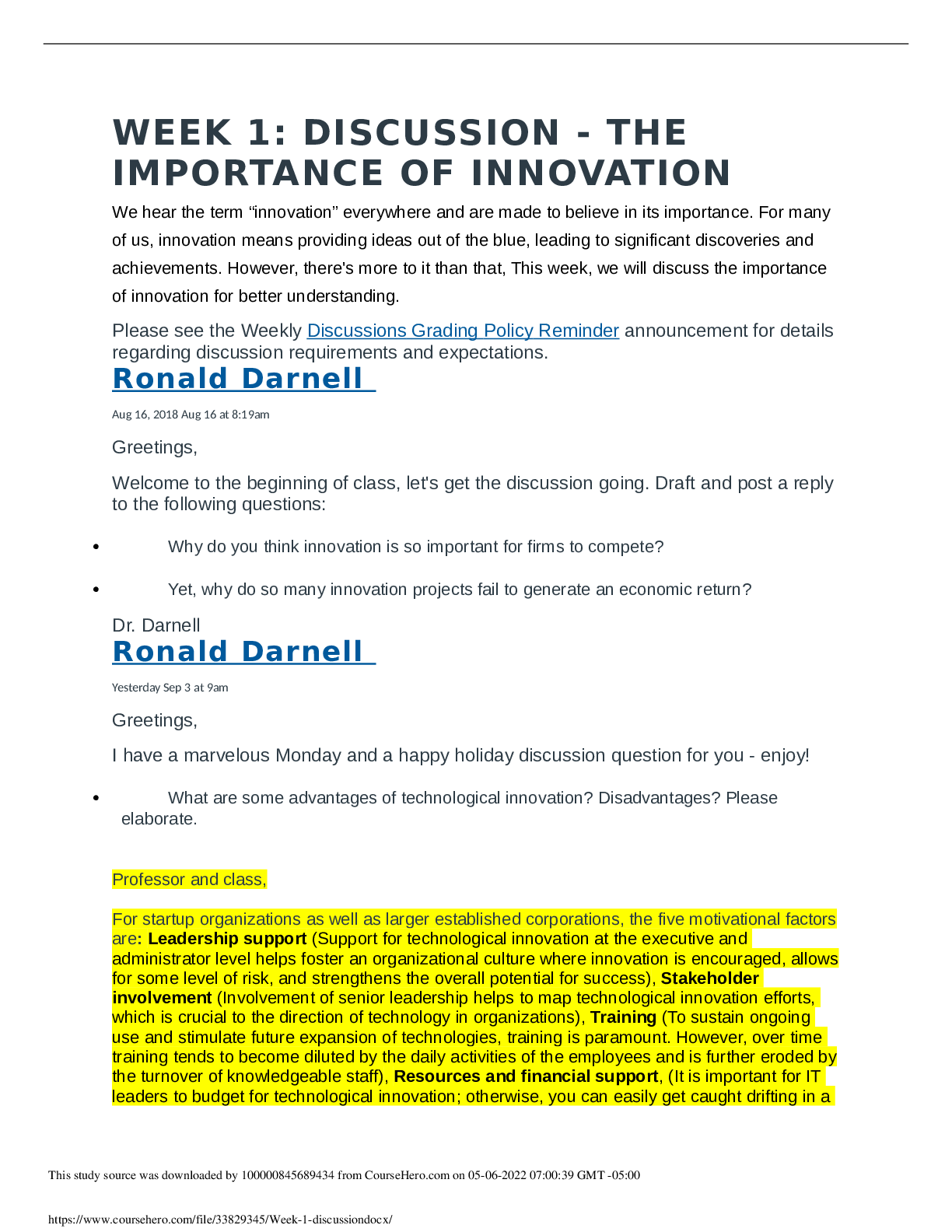

.png)
.png)

